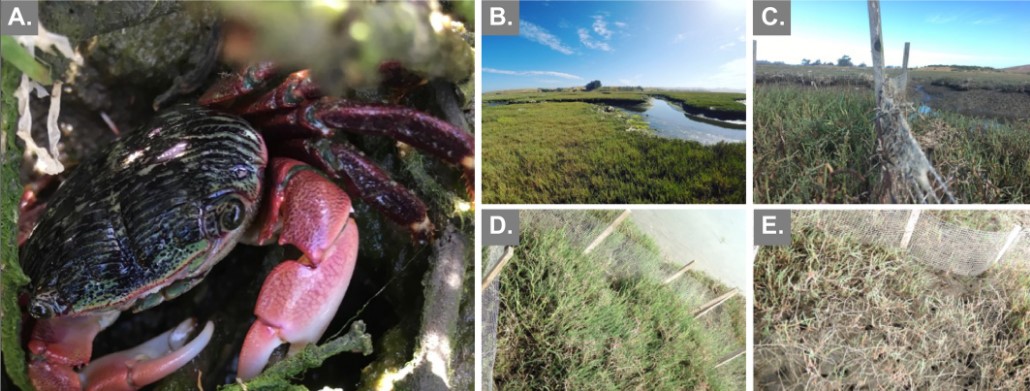Salt marsh resilience compromised by crabs along tidal creek edges
A long-term study in Elkhorn Slough revealed the impact of superabundant crabs on salt marsh vegetation and the vulnerability of tidal creek banks to erosion

Excerpt from press release by Tim Stephens / UC Santa Cruz News, August 09, 2021:
Coastal marshes are vulnerable to erosion caused by rising seas, pounding waves, and tidal flows. In Elkhorn Slough, these vulnerabilities are made worse by superabundant crabs found at their highest densities along the estuary’s tidal creeks, according to a new study published August 8 in Ecosphere.
The striped shore crab (Pachygrapsus crassipes) is a small crab found all along the West Coast of North America, and it is extremely abundant in Elkhorn Slough. The study demonstrated the dual role of these crabs as both consumers of salt marsh vegetation and as ecosystem engineers.
This collaborative study brought together marsh ecologists from both the East and West Coasts who have led the field in exploring how animals affect the marshes they inhabit. Over the past few decades, the U.S. East Coast has been the epicenter of studies exploring top-down effects in salt marshes, and this study is one of the few to explore such effects in a West Coast salt marsh.
“Southeastern U.S. marshes appear to be a harbinger of what’s to come for marshes along the Pacific coast, with sea-level rise amplifying the effects of what would otherwise be considered an innocuous crab,” said co-author Christine Angelini, associate professor at University of Florida.
Full UC Santa Cruz News press release
Citation: , , , , and . 2021. Long-term study reveals top-down effect of crabs on a California salt marsh. Ecosphere 12( 8):e03703. 10.1002/ecs2.3703
And many more press releases!
- Superabundant crabs threaten the resilience of salt marshes • Earth.com
- Salt marsh resilience compromised by crabs along tidal creek edges — ScienceDaily
- Salt marsh resilience compromised by crabs al | EurekAlert!
- Salt marsh resilience compromised by crabs along tidal creek edges (ucsc.edu)
- Elasticity of salt marshes impaired by crabs along the edge of the creek – Florida News Times
- Salt Marsh Resilience Compromised By Crabs Along Tidal Creek Edges – Eurasia Review